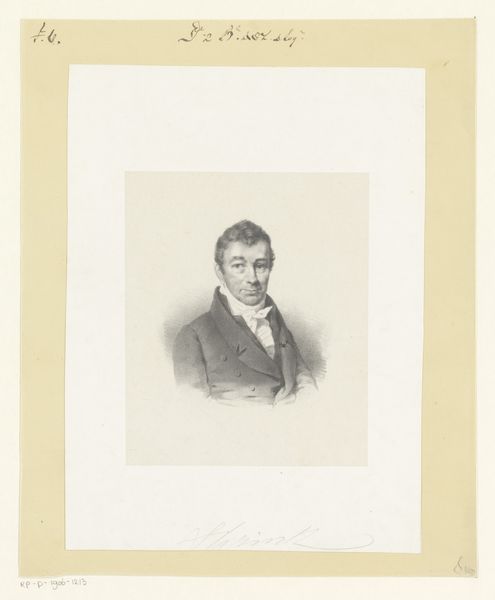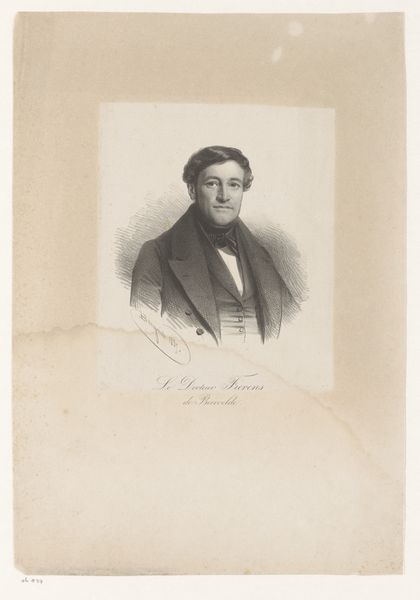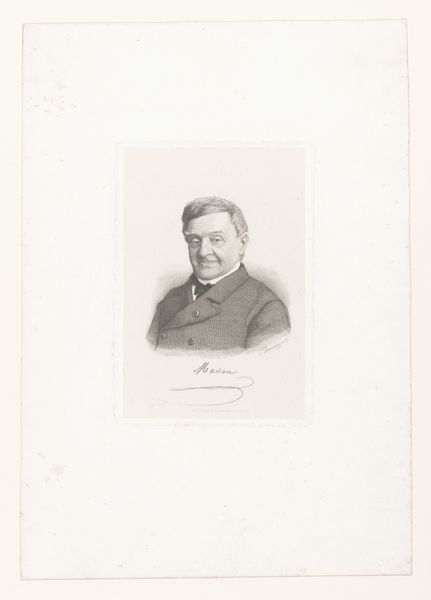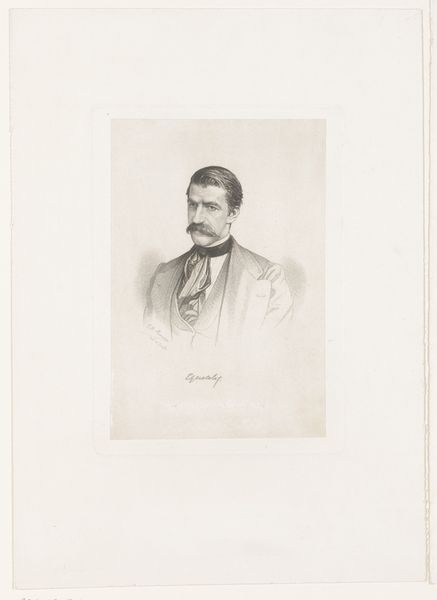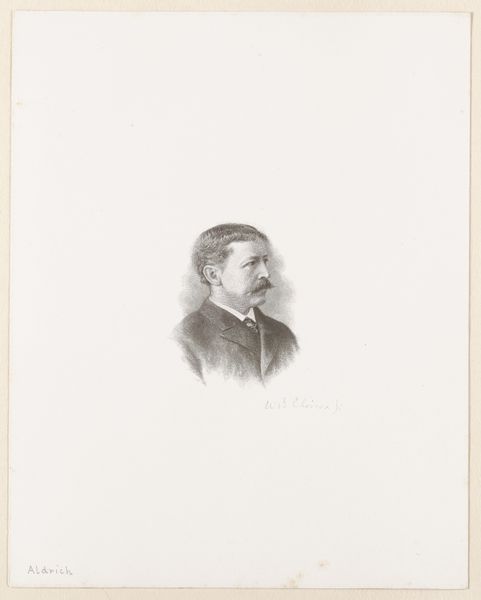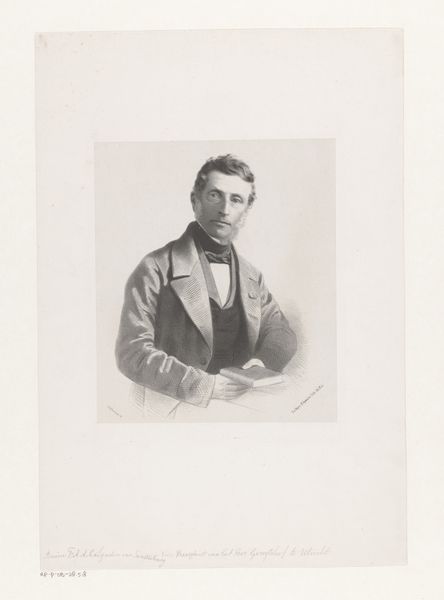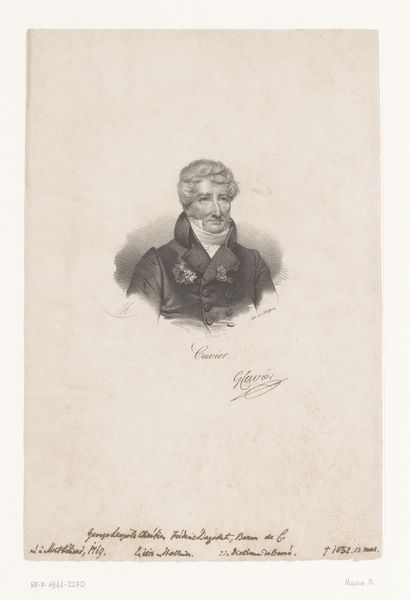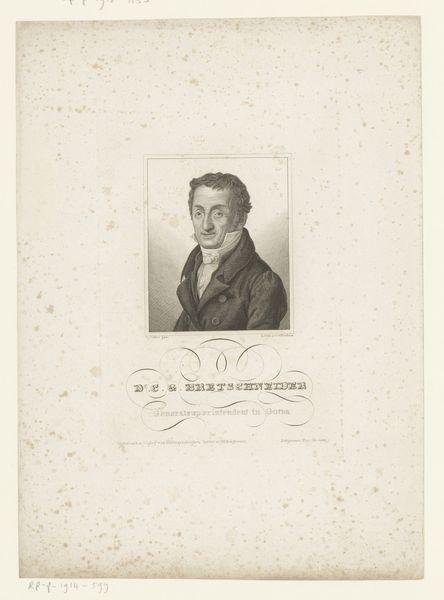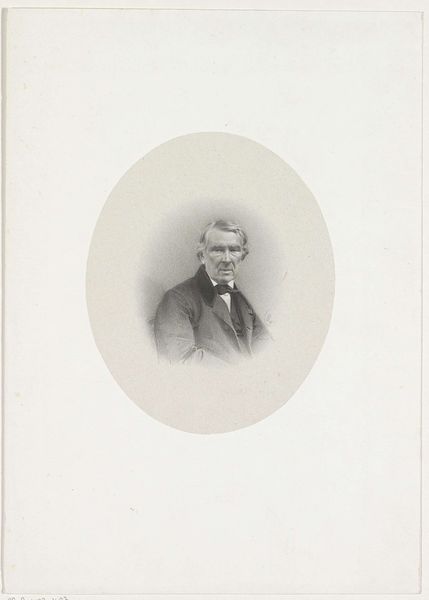
lithograph, print
#
portrait
#
pencil drawn
#
light pencil work
#
lithograph
# print
#
pencil sketch
#
pencil work
#
realism
Dimensions: height 336 mm, width 255 mm
Copyright: Rijks Museum: Open Domain
Editor: Here we have "Portret van Jan Willem de Crane," dating from 1842 to 1887, currently at the Rijksmuseum. It's a lithograph. The portrait feels very formal, yet there's a sketch-like quality to the lines. How do you interpret this work? Curator: I see a fascinating interplay between public image and private self, embedded in the symbolism and technique of portraiture. This image offers an intriguing blend of the romantic ideals of the era. Notice the stark simplicity, the somewhat direct gaze, and then observe the coat of arms carefully placed at the bottom: these are visual markers of identity, a desire to connect with cultural memory. What feelings do these various details invoke? Editor: The coat of arms does add a layer of historical weight. I initially saw the simplicity as just the artist’s style. Curator: Perhaps, but artists often borrow existing symbols and techniques. A lithograph like this one makes it a mass produced item but one with an artistic touch, suggesting an aspiration beyond the merely functional portrait. In it is an expression of class aspiration. Consider the gesture of the hand – relaxed, yet holding something. Does that convey power, contemplation, or something else entirely? Editor: I hadn't thought of it as conveying power. To me, it reads more like contemplation, but with your point about class aspiration, perhaps it's both? Curator: Precisely! These images accrue layers of meaning through cultural repetition and subtle adaptation. It is this interplay of artistic innovation and entrenched iconography which shapes our cultural memory. Editor: It’s amazing how much can be communicated through seemingly simple visual choices! Thank you! Curator: A pleasure. The act of interpreting is, in itself, a valuable insight into ourselves.
Comments
No comments
Be the first to comment and join the conversation on the ultimate creative platform.
